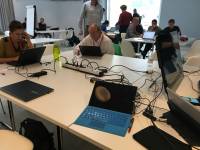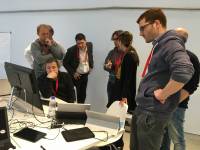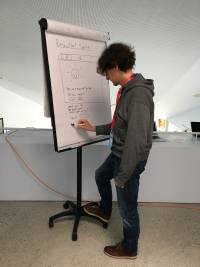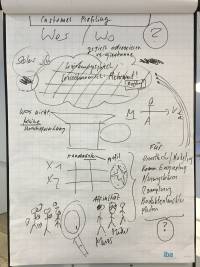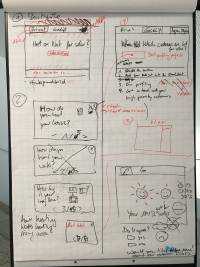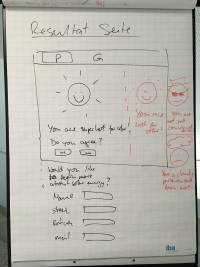This is an old revision of the document!
Hot or not for solar - Energy customer profiling made easy
Want to know who's hot for putting a solar power system of his or her roof?
Why spend unnecessary amounts of dollars for unspecified and misdirected marketing
We know your next solar customer!
Mission
Our mission is to help increase the penetration of renewable energy production.
Value proposition
For energy service providers and utilities who want to target specific solar power prospects our product hot or not for solar is an energy customer profiling service which produces a prioritized list of customers with an affinity for solar. Unlike traditional approaches our service takes advantage of hidden information from social demographic and economic values and uses machine learning algorithms for deriving the prospects affinity. In order to improve our algorithms we run surveys (quizz), injected in popular websites such as “20 Minuten” or our customers.
Simplified - For utilities who want to target specific solar prospects, hot or not for solar uses social data and machine learning to derive a short list.
Further simplified - Hot or not for solar - Energy customer profiling made easy
Main User-Story
As an energy service provider I want to know which prospects have an affinity for installing a solar system so that I can run personalized and focused marketing/presales activities.
Further potential customers are
- Public institutions such as Cantons and Municipalities how want to tailor information/communication/projects
- Planning and engineering companies / product developers how want to develop and sell new products
Background Information about the project
Data
BEN Energy (https://www.ben-energy.com) provided a sample data (approximately 5000 records) set with information about utility customers to include social demographic and economic information.
For detailed information see here: Data
Goal
The main goal of our project was to test whether social demographic and economic information is a value add in order to determine potential new solar customers. For background information about the business goals see section Value proposition.
Method
In order to test the hypothesis the team used Microsoft Azure machine learning and R (both using random forest algorithm). Furthermore the teams tested which attributes have most influence on the results. In parallel team members put together a list of properties they thought would influence the results. After a first iteration, falsifying attributes were removed from the machine learning process.
Finally the team concluded the project by creating a website to showcase the machine learning result as well as the business view.
Results / Findings
The team was able to derive a specific list of customers with an affinity for solar. Based on the results it came to the conclusion that social demographic and economic play a secondary role though. However, with a larger and probably more accurate set of information, the social information may become more important. For interest groups and businesses, the team recommends doing further research.
Team
- @Team - pls add your usernames
